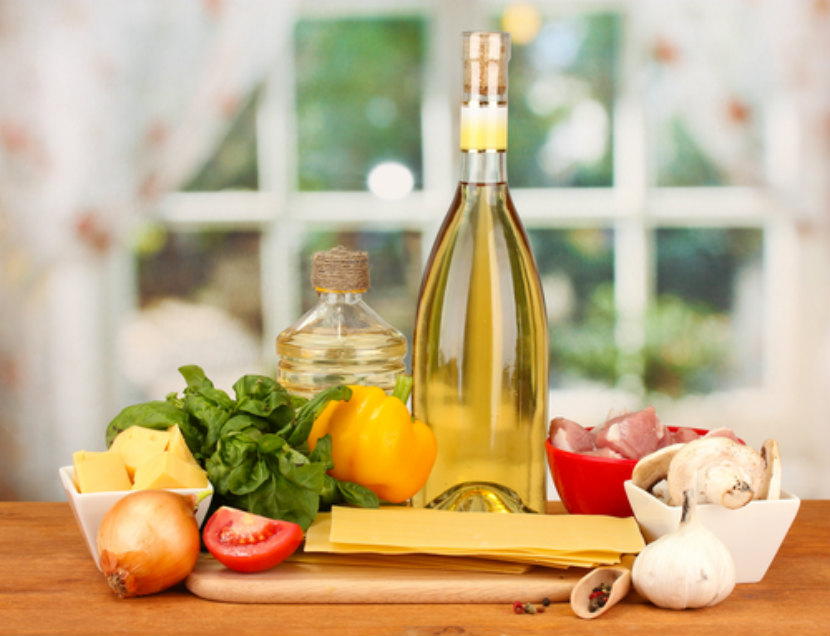
Using certain oils when cooking can be healthy, however, too much of any oil can add extra calories to your diet. Read on to learn which oils are best to use for cooking and how much oil is needed for a healthy diet.
Oil is part of a healthy diet
For good health, Canada’s Food Guide recommends 2 to 3 Tbsp (30 to 45 mL) of unsaturated fat each day. This amount includes oil in salad dressings, margarine, mayonnaise and the oil you use in cooking. Unsaturated vegetable oils include:
-
Canola
-
Corn
-
Flaxseed
-
Grapeseed
-
Hemp
-
Olive
-
Peanut
-
Soybean
-
Safflower
-
Sunflower
-
Walnut
For good health, limit butter, ghee, hard margarines, lard and shortening when cooking. These are high in saturated fats. A diet high in saturated fats is linked to a higher risk of heart disease.
What oils are best for cooking at low or high temperatures?
The oils below are good to use in cooking at both lower and high temperatures (deep frying, pan frying and sautéing):
-
Canola
-
Corn
-
Peanut
-
Safflower
-
Soybean
-
Sunflower
-
Vegetable
What oils are best for food that does not need to be cooked?
If you are using oil to make a salad dressing, dip or marinade or to drizzle over cooked food, use:
-
Canola
-
Corn
-
Flaxseed
-
Grapeseed
-
Hemp
-
Olive
-
Peanut
-
Safflower
-
Sesame seed
-
Soybean
-
Sunflower
-
Walnut
Quick tips for cooking with oil:
Frying
-
Fried foods are high in fat so enjoy them in smaller amounts and less often. Bake, grill, roast or steam your food most often.
-
When frying foods, heat the oil first, then add your food. The food will absorb less fat when the oil is hot.
-
Avoid heating oil so high that it starts to smoke. At that point the oil can burst into flames.
-
The normal temperature range for frying is 150°C to 190°C (approximately 300°F to 375°F).
Sautéing
-
Sautéing is when you cook food quickly in a hot pan with a little oil. Try using a tablespoon of oil and add more if needed.
-
You can substitute salt-free broth or wine for oil when sautéing food.
Baking
-
When baking muffins, cookies or cakes you can replace one cup of solid fat, such as butter or shortening, with ¾ cup of canola oil. Other oils that work well in baking include vegetable oil or sunflower oil.
Tips on drizzling oils
-
Some oils like sesame seed and walnut oils are very flavorful so you don’t need to drizzle a lot.
-
Instead of buttering your bread, drizzle a little balsamic vinegar into a small saucer of olive oil. Dip your bread into that.
You may also be interested in
Facts on Fats
Tackling Trans Fat
Recipe Makeover: Reducing the Fat in the Kitchen
Last Update – June 13, 2018